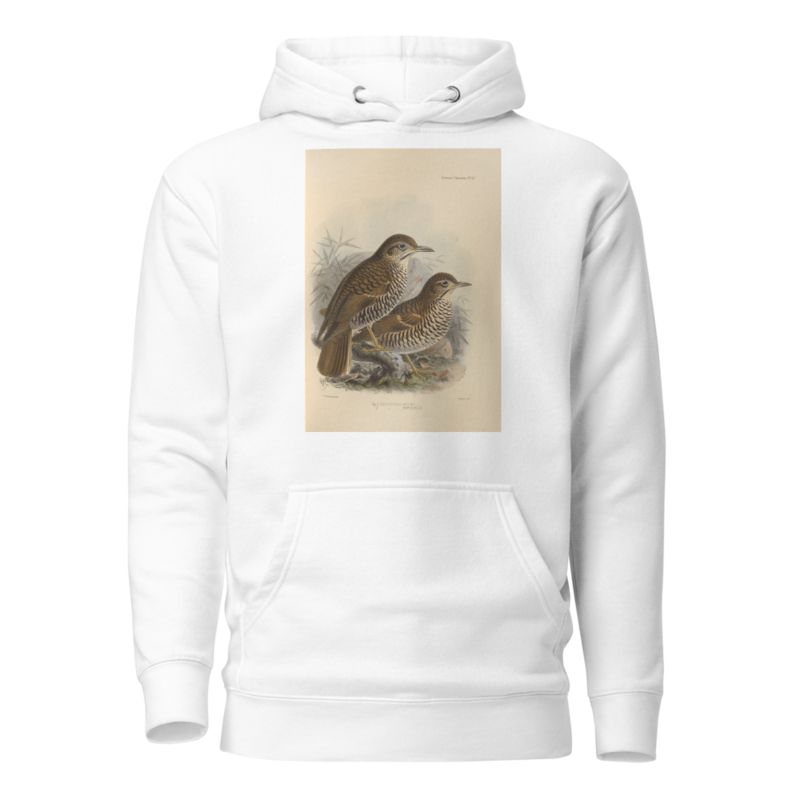Description
Geocichla Heinii, Geocichla Papuensis by Henry Seebohm printed on a Hoodie
About the Hoodie
Modern fit
It provides a more tailored look than a regular fit
Comfortable
The fabric and fit of this item are extra comfy
Tear-away tag
Easily removable tear-away tag that allows you to add a custom inside label
Premium quality
The product is made from premium, high-quality materials
Classic unisex hoodie with a front pouch pocket and matching flat drawstrings. The 100% cotton exterior makes this hoodie soft to the touch.
- 65% ring-spun cotton, 35% polyester
- Charcoal Heather is 60% ring-spun cotton, 40% polyester
- Carbon Grey is 55% ring-spun cotton, 45% polyester
- 100% cotton face
- Fabric weight: 8.5 oz./yd.² (288.2 g/m²)
- Front pouch pocket
- Self-fabric patch on the back
- Matching flat drawstrings
- 3-panel hood
- Tear-away tag
Henry Seebohm (1832 – 1895)
Henry Seebohm was an English steel manufacturer, and amateur ornithologist, oologist and traveller.
Henry was the oldest son of Benjamin Seebohm (1798–1871) who was a wool merchant at Horton Grange, Bradford. The family had moved to England from Bad Pyrmont in Germany. Henry’s mother Estther Wheeler (1798–1864) was a granddaughter of William Tuke. The Seebohms were active in the Society of Friends and Henry schooled within the community in York. He worked initially in a grocery as an assistant but moved to Sheffield where he became a steel manufacturer. He married Maria, daughter of George John Healey, a merchant in Manchester on 19 January 1859.
Henry became interested in natural history at school and continued to spend his spare time studying birds on his journeys. He travelled widely visiting Greece, Scandinavia, Turkey, and South Africa. His expeditions to the Yenisey tundra of Siberia were described in his two books, Siberia in Europe (1880) and Siberia in Asia (1882), which were combined in the posthumous publication The Birds of Siberia (1901). His expeditions included the lower Pechora River in 1875 along with John Alexander Harvie-Brown as well as a visit to Heligoland at the home of Heinrich Gätke. In 1877 he joined Joseph Wiggins to Siberia.
He was one of the first European ornithologists to accept the American trinomial system to classify sub-species.
Seebohm’s other publications included A History of British Birds (1883), The Geographical Distribution of the family Charadriidae (1887), The Birds of the Japanese Empire (1890) and A Monograph of the Turdidae (1902, completed by Richard Bowdler Sharpe).
Seebohm bequeathed his collection of bird-skins to the British Museum. The collection which was received in 1896 consisted of nearly 17,000 specimens. A number of birds were named after Seebohm, including the grey emutail (Dromaeocercus seebohmi) by Bowdler Sharpe. A portrait of Seebohm in oil by Hugh Ford Crighton is held by Sheffield Museums.






Reviews
There are no reviews yet.